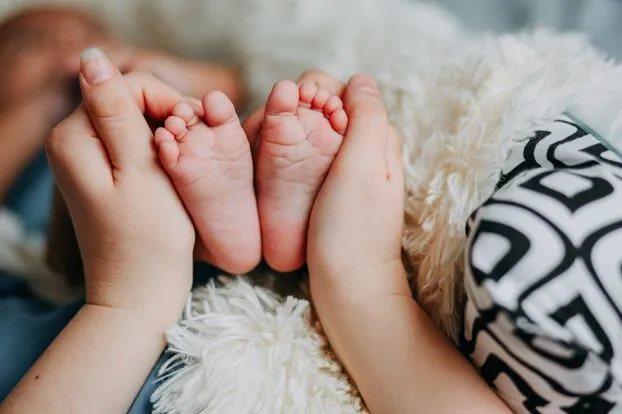How to Create a Non-Toxic Nursery for Your Little One
Welcoming a new baby into your home is one of life’s most exciting milestones. As you prepare for their arrival, setting up the nursery becomes a top priority. But beyond cute decor and soft blankets, there’s one crucial factor that often gets overlooked: creating a non-toxic environment. Your baby will spend countless hours sleeping, playing, and growing in that room, so ensuring it’s free from harmful chemicals is one of the best things you can do for their health.
Websites like Finn and Emma make it easy to find ethically made toys, organic cotton baby clothes, and other essentials that are safe for your baby and kind to the planet.
In this guide, we’ll walk you through how to create a non-toxic nursery step-by-step, covering everything from furniture and paint to bedding and air quality.
Why a Non-Toxic Nursery Matters
Babies are more vulnerable to toxins than adults. Their developing organs and immune systems make them more susceptible to the negative effects of chemical exposure. Studies have shown that certain substances commonly found in household products such as VOCs (volatile organic compounds), formaldehyde, phthalates, and flame retardants can disrupt hormone development, respiratory function, and even contribute to long-term health issues.
Creating a safe, chemical-free space isn’t about perfection. It’s about making informed choices that reduce your baby’s exposure to potentially harmful substances.
- Choose Low-VOC or No-VOC Paint
One of the first steps in setting up the nursery is painting the walls. Traditional paints can release VOCs into the air for days or even weeks after application, which can affect indoor air quality.
Tips:
- Choose paints labeled as “low-VOC” or “zero-VOC.”
- Paint the room at least a month before your baby arrives to allow time for airing out.
- Open windows and use fans to help dissipate fumes more quickly.
Recommended Brands: ECOS Paints, Clare Paint, Benjamin Moore Natura
- Opt for Greenguard-Certified Furniture
Cribs, dressers, and changing tables can be major sources of off-gassing, especially if made from particleboard or MDF that contains formaldehyde.
What to Look For:
- Solid wood furniture with non-toxic finishes
- Greenguard Gold Certification, which ensures products meet strict chemical emissions standards
- Avoid furniture with laminate finishes or pressed wood unless explicitly labeled non-toxic
Recommended Brands: Babyletto, Oeuf, DaVinci Baby
- Use an Organic Crib Mattress
Your baby will spend up to 16 hours a day sleeping, especially in the first few months. A conventional crib mattress can emit chemicals from flame retardants, plasticizers, and vinyl covers.
Safer Options:
- Choose a mattress made from organic cotton, wool, or natural latex
- Look for certifications like GOTS (Global Organic Textile Standard) or GREENGUARD Gold
- Avoid mattresses with synthetic waterproof covers instead, use a wool puddle pad or a GOTS-certified waterproof cover
Recommended Brands: Naturepedic, Avocado, My Green Mattress
- Keep Bedding Simple and Organic
Bedding touches your baby’s skin for hours at a time. Prioritize natural, breathable fabrics.
Choose:
- Organic cotton sheets and mattress protectors
- Avoid blankets, bumpers, and pillows in the crib for safety and simplicity (per AAP safe sleep guidelines)
- Wash all new bedding in a fragrance-free, non-toxic detergent before use
Recommended Brands: Burt’s Bees Baby, Coyuchi, Under the Nile
- Be Mindful with Flooring
If your nursery has new carpeting, it may emit VOCs. Hardwood or natural flooring is a better option for a non-toxic space.
If Carpet Is Necessary:
- Use low-pile, natural fiber carpets like wool
- Make sure it’s labeled low-VOC or formaldehyde-free
- Air out the carpet before your baby arrives
Tip: Add an organic cotton play mat or area rug that’s easy to clean
- Choose Non-Toxic Toys and Decor
Babies explore the world with their mouths, so it’s essential that their toys and surroundings are free of harmful chemicals.
Safer Choices:
- Wooden toys with non-toxic finishes (look for water-based paints)
- Organic stuffed animals and cloth books
- Avoid plastic toys with phthalates, BPA, or PVC
Decor Tips:
- Skip vinyl wall decals opt for felt, wood, or fabric wall hangings instead
- Use cotton or linen curtains and avoid synthetic blackout materials unless certified non-toxic
- Use Natural Cleaning Products
What you use to clean the nursery matters just as much as what you put in it. Many cleaning products contain chemicals that linger on surfaces or in the air.
Non-Toxic Cleaning Tips:
- Use vinegar and water or castile soap for general cleaning
- Choose fragrance-free or naturally scented (with essential oils) products
- Ditch synthetic air fresheners and candles opt for an essential oil diffuser if desired, but use sparingly and never directly near your baby
- Maintain Good Air Quality
Indoor air can be more polluted than outdoor air, especially in rooms with new furniture or paint.
Improve Air Quality By:
- Keeping windows open regularly to ventilate the room
- Using a HEPA air purifier that filters out allergens and VOCs
- Adding air-purifying plants like spider plants or peace lilies (keep them out of reach)
- Avoiding smoking or burning candles/incense anywhere near the nursery
Recommended Air Purifiers: Austin Air Baby’s Breath, Blueair, IQAir HealthPro
- Rethink Diapering and Skin Care
Many mainstream diapering and baby skincare products contain synthetic fragrances, preservatives, and other irritants.
Safer Diapering Options:
- Cloth diapers made from organic cotton, bamboo, or hemp
- If using disposables, choose brands like Dyper, Andy Pandy, or Bambo Nature
For Baby Skincare:
- Choose fragrance-free, EWG-rated baby lotions and washes
- Keep routines simple most babies don’t need frequent baths or a long list of products
- Avoid Flame Retardants
Flame retardants are commonly found in baby items like nursing pillows, gliders, and mattresses, and have been linked to hormonal disruption and developmental delays.
What to Do:
- Choose items labeled “free from flame retardants”
- Select furniture with natural materials like wool (which is naturally flame-resistant)
- Always check product certifications or call the manufacturer if unsure
Final Thoughts: It’s About Progress, Not Perfection
Creating a non-toxic nursery doesn’t mean replacing everything overnight or breaking the bank. It’s about making intentional, informed choices where you can. Even small changes like switching to organic sheets or using a low-VOC paint can make a meaningful difference in your baby’s environment.
Remember, your love and attention are the most important things your baby needs. A safe, non-toxic nursery is simply one of the many ways you can support their growth and wellbeing.




